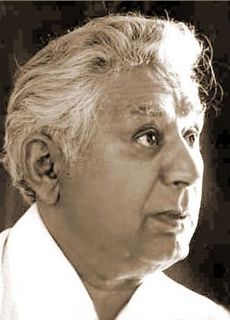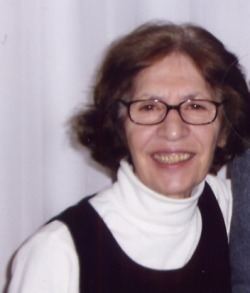 W
WSeyyed Jalāl Āl-e-Ahmad was a prominent Iranian novelist, short-story writer, translator, philosopher, socio-political critic, sociologist as well as an anthropologist who was "one of the earliest and most prominent of contemporary Iranian ethnographers". He popularized the term gharbzadegi – variously translated in English as "westernstruck", "westoxification", and "Occidentosis" –, producing a holistic ideological critique of the West "which combined strong themes of Frantz Fanon and Marx".
 W
WBozorg Alavi was an influential Iranian writer, novelist, and political intellectual. He was a founding member of the communist Tudeh Party of Iran in the 1940s and – following the 1953 coup against Premier Mohammad Mossadegh – spent the rest of his life in exile in East Germany, first during the Pahlavi regime, then returning to Germany once more following the 1979 revolution. Cheshm'hā'yash, which was published in Iran in 1952 and was subsequently banned, is considered his finest novel. Alavi was also a very close friend of Iran's famous writer Sadegh Hedayat; these two created a literary group when they were residing in Paris called "sab'e group". Although Her Eyes is considered his masterpiece, Alavi also wrote many other books, such as the novel "Chamedan" (suitcase) which was written under the influence of Freudian psychology. His other novels "Mirza", "Fifty Three Persons" and "Gilemard" are mentioned in Iranian high-school textbooks. He did return to Tehran after the revolution but did not stay too long and decided to head back to Germany. Bozorg Alavi's contribution to Iranian Literature is profound due to the modernization movement in which he was a key member.
 W
WAli-Asghar Sadr Haj Seyyed Javadi was an Iranian writer, journalist and activist. Politically, he was a dissident to both Pahlavi and Islamic Republic governments.
 W
WReza Baraheni, is an Iranian, an exiled Iranian novelist, poet, critic, and political activist.
 W
WSimin Behbahani, her surname also appears as Bihbahani was a prominent Iranian contemporary poet, lyricist and activist. She is known for her poems in a ghazal-style of poetic form. She was an icon of modern Persian poetry, Iranian intelligentsia and literati who affectionately refer to her as the lioness of Iran. She was nominated twice for the Nobel Prize in literature, and "received many literary accolades around the world."
 W
WRoja Chamankar, born 20 May 1981 in Borazjan, Bushehr Province, Iran, in southern Iran, is a Persian poet.
 W
WAli Ashraf Darvishian was a Kurdish story writer and scholar. After finishing teacher-training college, he would teach at the poverty-stricken villages of Gilan-e-Gharb and Shah Abad. This atmosphere is featured in most of his stories. His own life situation, as well as the experiences that he had from his teaching in those poor areas, was the inspiration for his literary works and also made him a critic of the political and social situation of Iran. Later, he moved to Tehran and continued his studies in Persian literature.
 W
WLili Golestan Taghavi Shirazi is an Iranian translator, and owner and artistic director of the Golestan Gallery in Tehran. She is the daughter of the filmmaker and writer Ebrahim Golestan, the sister of the late photojournalist Kaveh Golestan and the mother of filmmaker Mani Haghighi.
 W
WHoushang Golshiri was an Iranian fiction writer, critic and editor. He was one of the first Iranian writers to use modern literary techniques, and is recognized as one of the most influential writers of Persian prose of the 20th century.
 W
WIraj Kaboli is an Iranian writer, linguist and translator.
 W
WEsmail Khoi, is an Iranian poet. He currently lives in the United Kingdom after being exiled from Iran during the 1980s. Khoi was originally a lecturer in Philosophy before the Iranian Revolution.
 W
WHoma Nategh was an Iranian historian, Professor of History at University of Tehran. A specialist in the contemporary history of Iran, she resided in Paris, France until her death. She was active during Iran's 1979 revolution. After the revolution she was purged from the University of Tehran and moved to Paris, where she was appointed as professor of the Iranian Studies at the Sorbonne. In Sorbonne she published several articles on Iranian history in Qajar period.
 W
WRahmatollah Moghaddam Maraghei was an Iranian politician. A co-founder of the Iranian Writers' Association (IWA), he briefly served as a member of the parliament in the early 1960s, but was ousted for criticizing the Shah. Following the Iranian Revolution, he was elected to the constituent assembly and was considered among the opposition bloc to the Islamic Republican Party. He went into hiding and fled the country after he was prosecuted for espionage.
 W
WHosain Sanapour is an Iranian writer.
 W
WFaraj Sarkohi is an Iranian literary critic and journalist. He was cofounder and editor in chief of the Iranian magazine Adineh.
 W
WAhmad Shamlou was an Iranian poet, writer, and journalist. Shamlou was arguably the most influential poet of modern Iran. His initial poetry was influenced by and in the tradition of Nima Youshij. In fact, Abdolali Dastgheib, Iranian literary critic, argues that Shamlou is one of the pioneers of modern Persian poetry and has had the greatest influence, after Nima, on Iranian poets of his era. Shamlou's poetry is complex, yet his imagery, which contributes significantly to the intensity of his poems, is accessible. As the base, he uses the traditional imagery familiar to his Iranian audience through the works of Persian masters like Hafez and Omar Khayyám. For infrastructure and impact, he uses a kind of everyday imagery in which personified oxymoronic elements are spiked with an unreal combination of the abstract and the concrete thus far unprecedented in Persian poetry, which distressed some of the admirers of more traditional poetry.